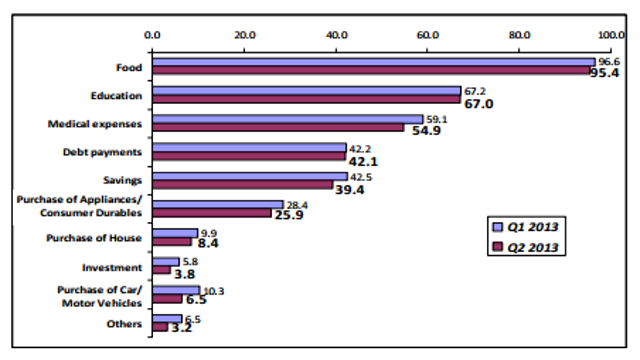SUMMARY
This is AI generated summarization, which may have errors. For context, always refer to the full article.
MANILA, Philippines – Money sent by overseas Filipino workers (OFW) to their families at home in the second quarter went mainly to food, education, medical expenses and debt payments, a Bangko Sentral ng Pilipinas (BSP) survey showed.
Out of 525 households receiving remittances that were polled by BSP in its Second Quarter 2013 Consumer Expectations Survey (CES), 95.4% said money from their loved ones abroad was spent for food, 67% said it was spent for education, 54.9% for medical expenses, and 42.1% for debt payments.
The percentage of OFW households that used remittances for savings fell to 39.4% from 42.5% in the First Quarter CES.

“Those that apportioned part of their remittances for investment, purchase of consumer durables, motor vehicles and real property also went down compared to the previous quarter’s results,” the central bank said.
Remittances are one of the main drivers of consumer spending in the Philippines.
In the second quarter, consumer confidence hit a record high on the back of the country’s strong growth. The net consumer confidence index, although still in negative territory, improved to -5.7% from -11.2% in the first quarter, the BSP said.
The CES, which had a random sample of 5,000 households nationwide, was conducted from April 3 to 15, 2013. – with a report from Ramon Calzado/Rappler.com
Add a comment
How does this make you feel?
There are no comments yet. Add your comment to start the conversation.